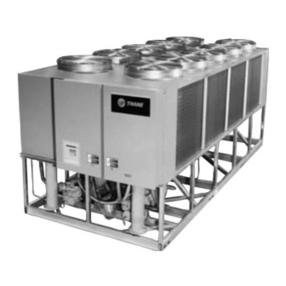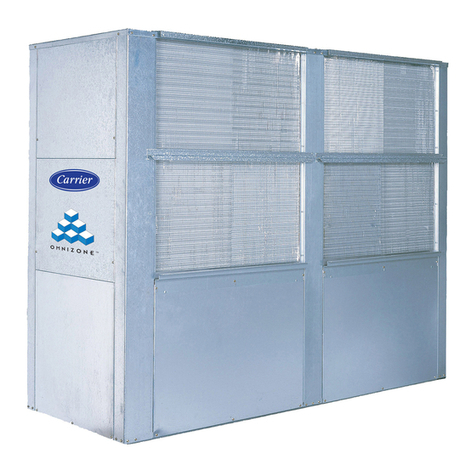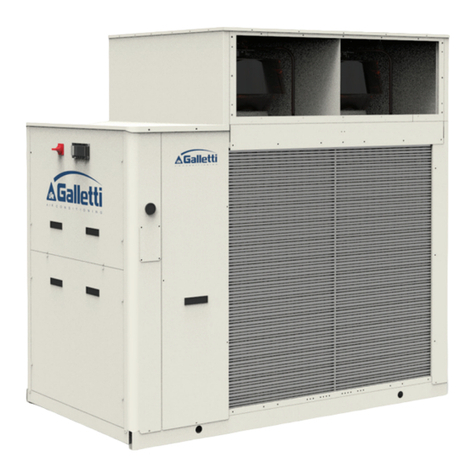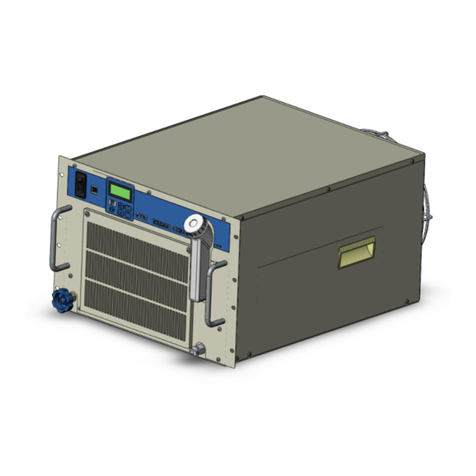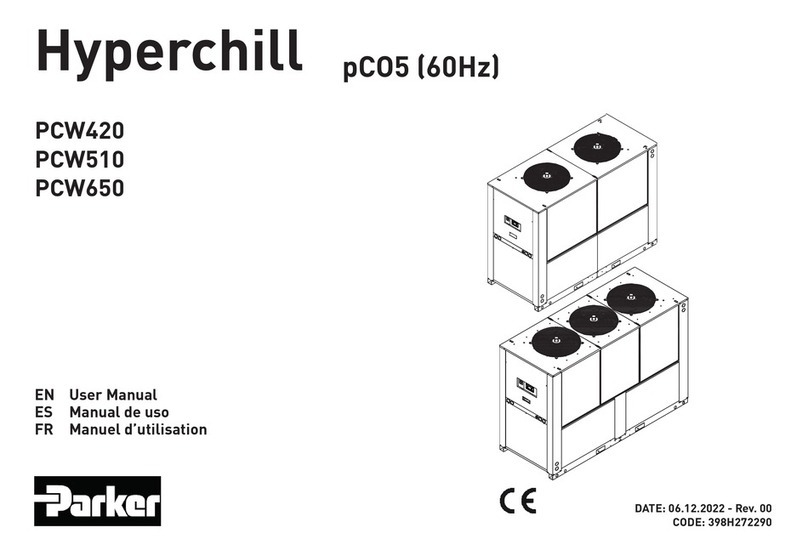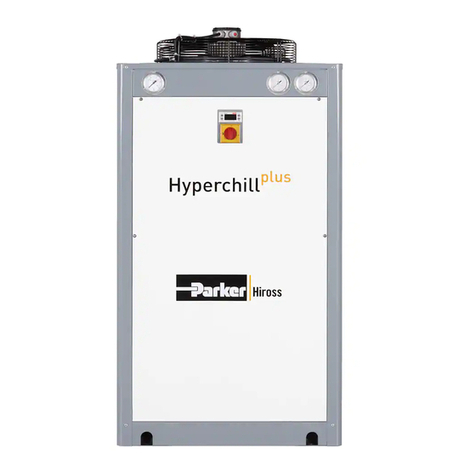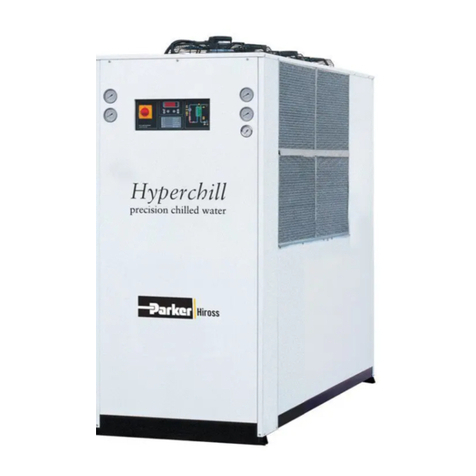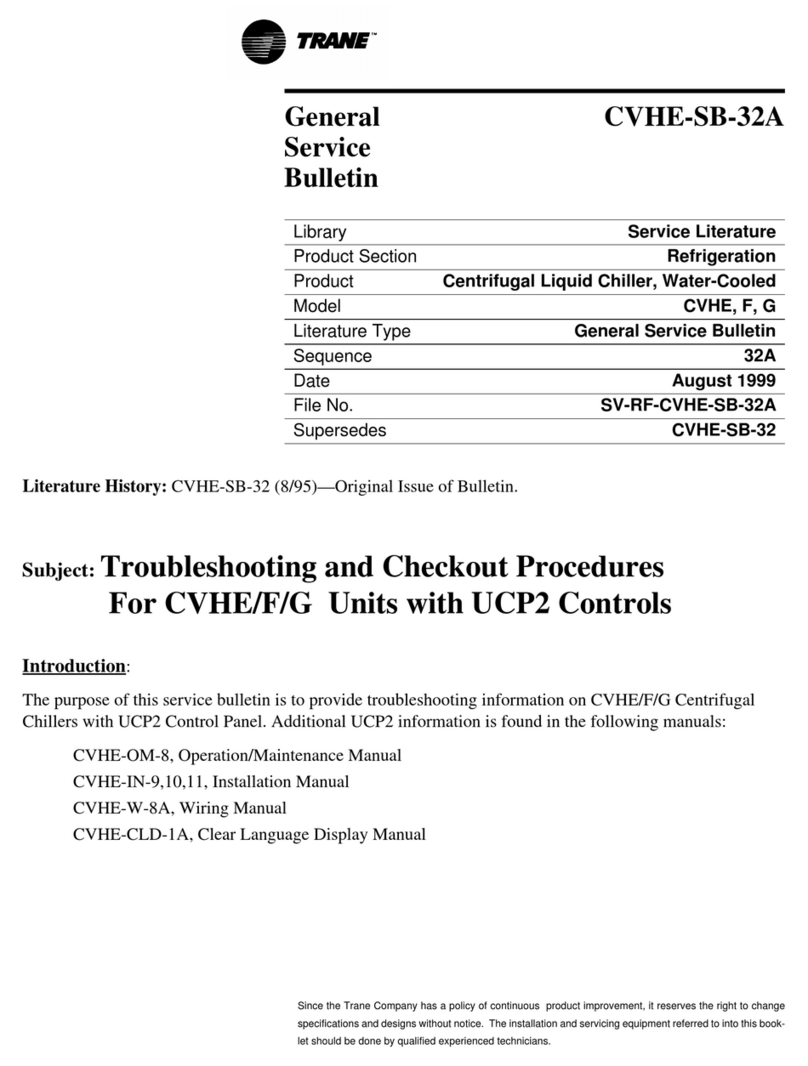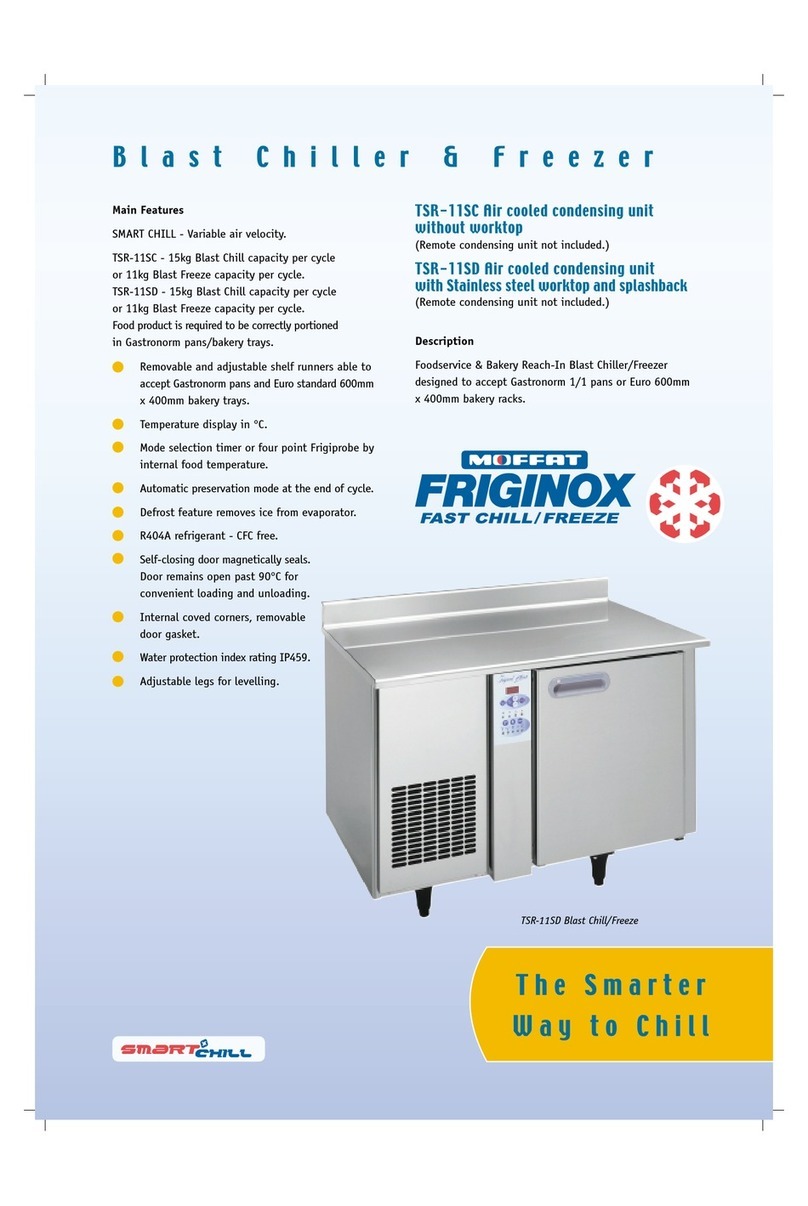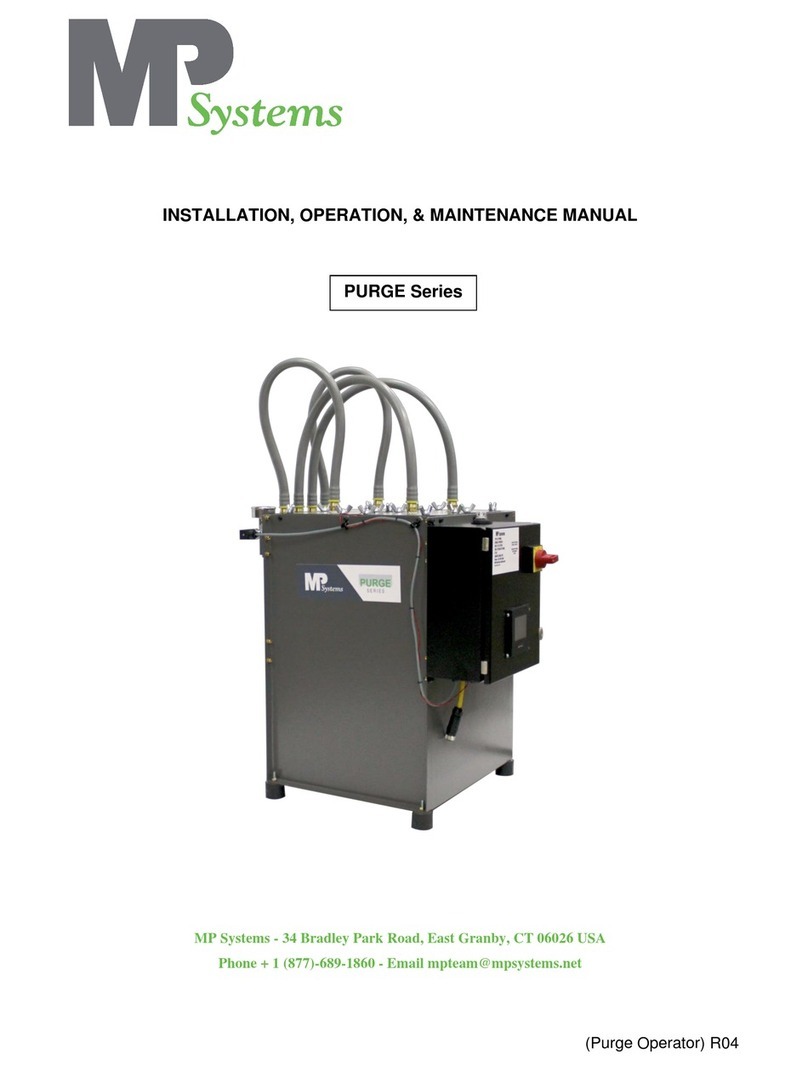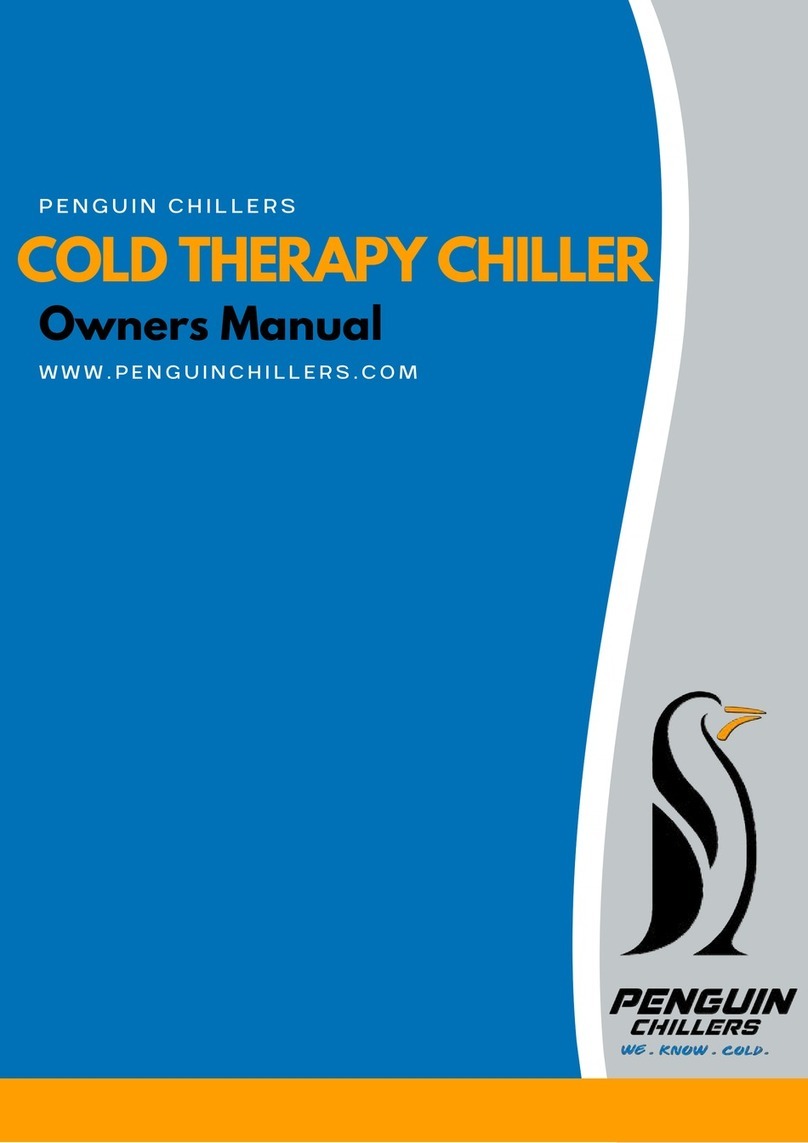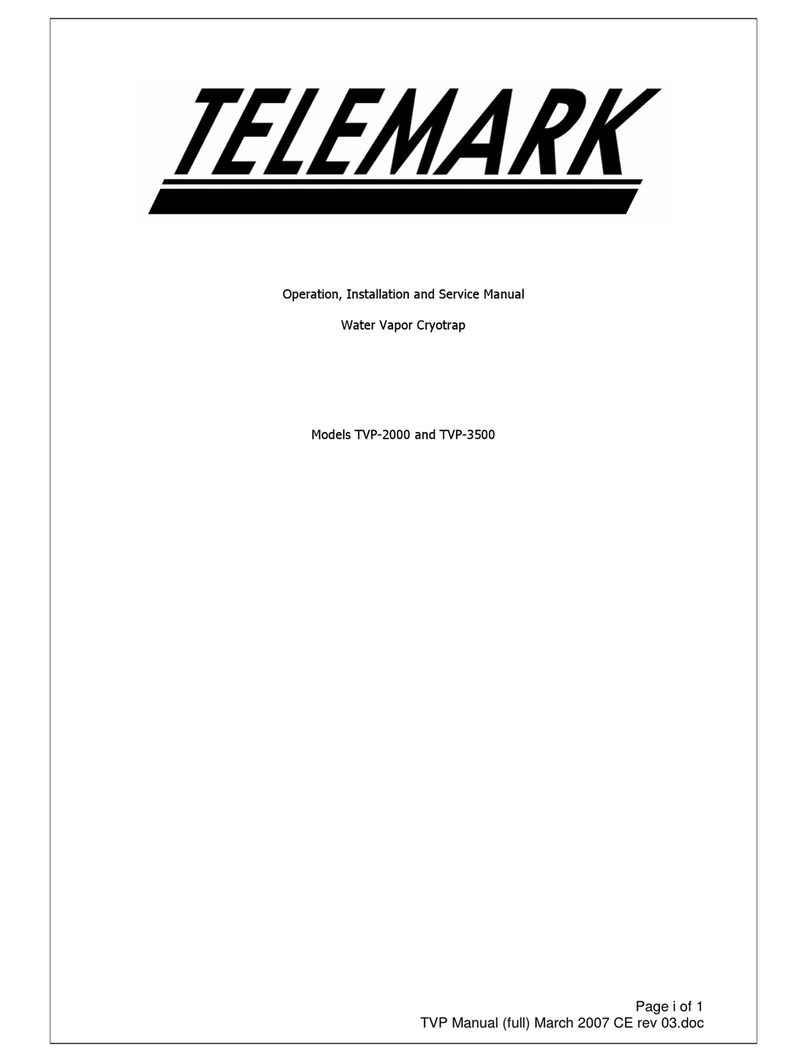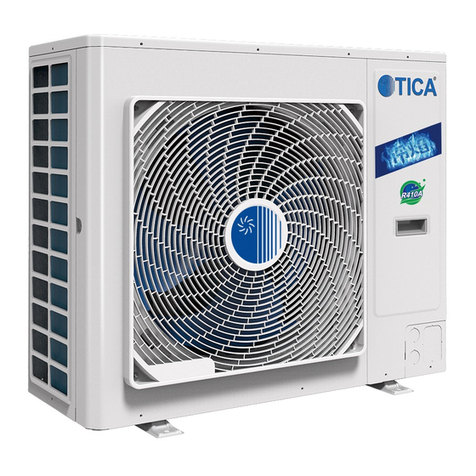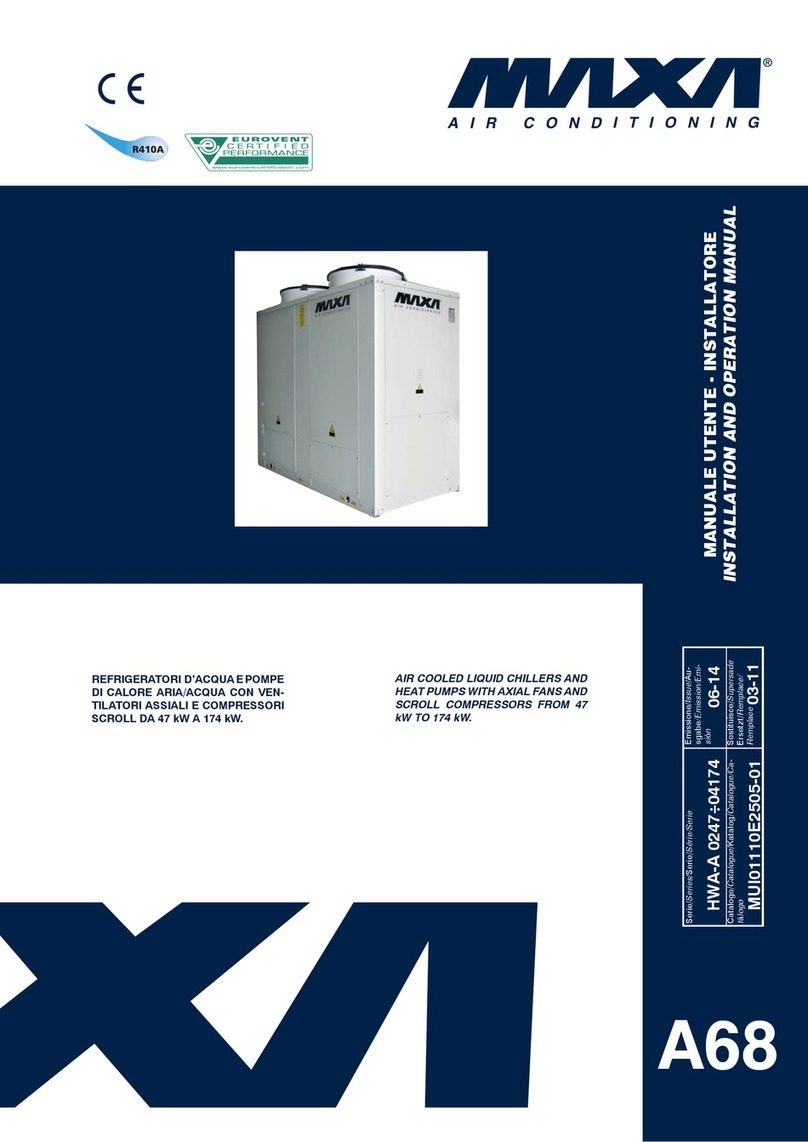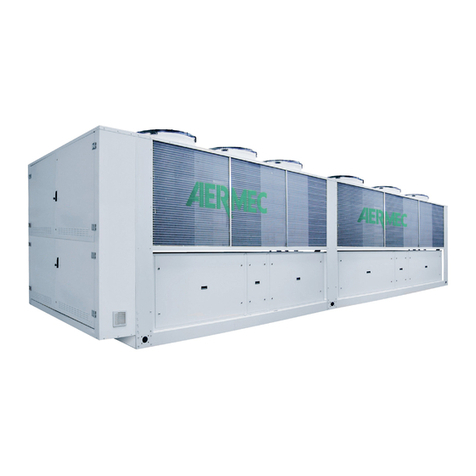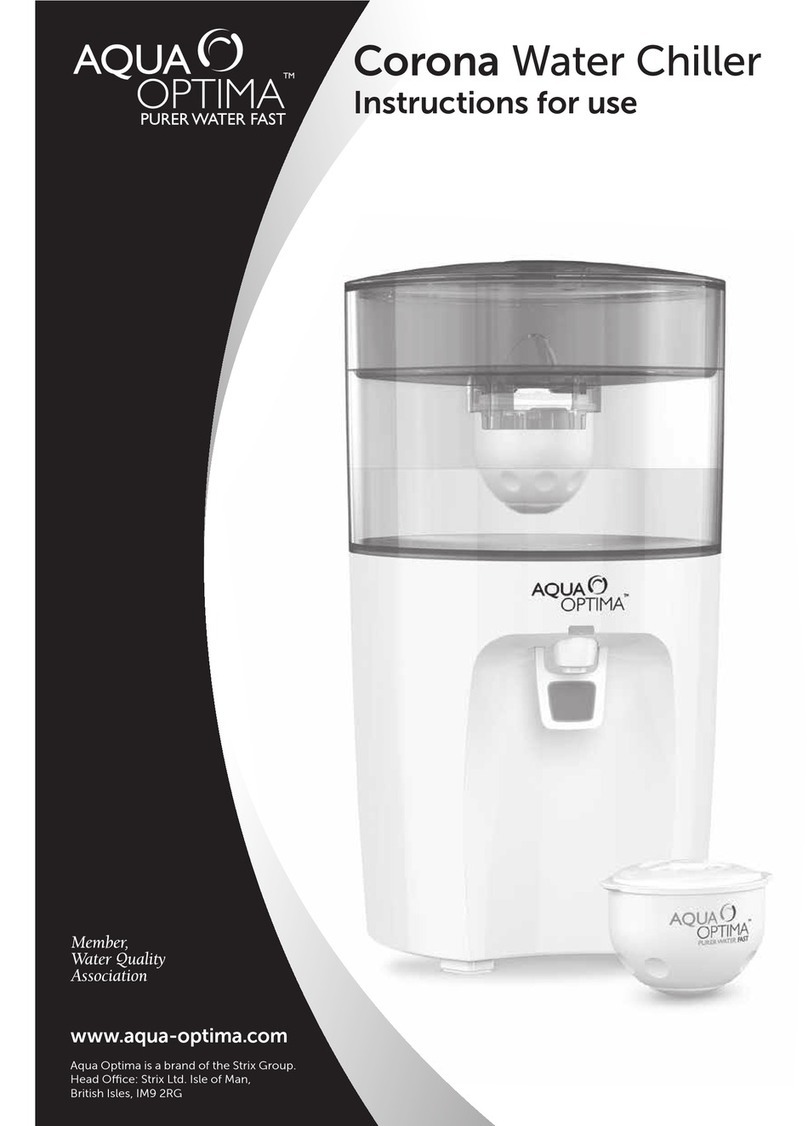
English 2 / 8
ICEP003-005 (60Hz)
part
affected
residual
risk
manner of
exposure
precautions
outside the
unit: area
surrounding
the unit
intoxica-
tion, serious
burns
re due to short
circuit or overheat-
ing of the supply
line upstream of
the unit’s electrical
panel
ensure conductor
cross-sectional areas
and the supply line
protection system
conform to applicable
regulations
2 Introduction
The fan, pump and compressor motors are equipped with a thermal
protector that protects them against possible overheating.
2.1 Transport
The packed unit must remain:
a) Upright;
b) Protected against atmospheric agents;
c) Protected against impacts.
2.2 Handling
Use a fork-lift truck suitable for the weight to be lifted, avoiding any
type of impact.
2.3 Inspection
a) All the units are assembled, wired, charged with refrigerant and oil
and tested in the factory;
b) On receiving the machine check its condition: immediately notify
the transport company in case of any damage;
c) Unpack the unit as close as possible to the place of installation.
2.4 Storage
a) Keep the unit packed in a clean place protected from damp and
bad weather.
b) Do not stack the units;
c) Follow the instructions given on the package.
3 Installation
Y For correct installation, follow the instructions given in par.7.2, 7.3
and 7.7.
!It is recommended that all chillers be fitted with adequate pre-
filtration near the inlet water to the chiller.
!Liquids to be chilled
The liquids to be chilled must be compatible with the materials used.
Examples of liquids used are water or mixtures of water and ethylene
or propylene glycols or oil.
The liquids to be chilled must not be ammable.
If the liquids to be chilled contain hazardous substances (e.g. ethylene/
propylene glycol), any liquid discharged from a leakage area must be
collected, because it is harmful to the environment. When draining
the hydraulic circuit, comply with the current regulations and do not
disperse the contents in the environment.
3.1 Operating space
Leave a space of 1.5 m around the unit.
Leave a space of at least 2 metres above the refrigerator in models with
vertical emission of condensation air.
3.2 Versions
Axial fans (A)
Do not create cooling air recirculation situations.
Do not obstruct the ventilation grilles.
The ducting of extracted air is not recommended for versions with axial
fans.
3.3 Water circuit
3.3.1 Checks and connection
Y Before connecting the chiller and lling the circuit, check that all
the pipes are clean. If not, wash them out thoroughly.
Y If the plumbing circuit is of the closed type (only for ICEP005),
under pressure it is advisable to install a safety valve set to:
6 bar (for water version)
Y (for water version) Always install mesh lters on the water inlet and
outlet pipelines.
Y If the hydraulic circuit is intercepted by automatic valves, protect
the pump with an anti-hammering system.
Y (for water version) If the hydraulic circuit is emptied for shut-down
periods we recommend that you add lubricating uid to the pump’s
impeller to avoid the risk of blockage when it is re-started. In case the
impeller is blocked then you should unblock it manually.
Remove the rear cover of the pump and carefully turn the plastic fan.
If the impeller is stuck then remove the fan and turn the impeller shaft
directly. After un-blocking the impeller re-assemble the fan and cover.
Preliminary checks
1) Check that any shut-off valves in the idraulic circuit are open.
2) (for water version) In the case of a closed water circuit(only for
ICEP005), check that an expansion tank of suitable capacity has
been installed. See paragraph 3.3.3.
Connection
1) Connect the cooler to the inlet and outlet piping, using the special
connections located on the back of the unit.
We recommend the use of exible unions to reduce system rigidity.
2) (for water version) Fill the water circuit using the tting provided on
the rear of the chiller ( ).
3) (for water version) The tank is equipped with a breather valve
that should be operated manually when lling the tank. Also, if the
hydraulic circuit has high points, install a vent valve at the highest
points.
4) We recommend that taps are installed on the inlet and outlet pipes,
so that the unit can be excluded for maintenance when necessary.
5) If the chiller works with an open tank, the pump must be installed
on intake to the tank and on delivery to the chiller.
Subsequent checks
1) (for water version) Check that the tank and the circuit are complete-
ly full of water and that all the air has been expelled from the system.
2) (for water version) The water circuit must always be kept full. For
this reason, carry out periodic checks and top the circuit up if neces-
sary, or install an automatic lling kit.
3.3.2 Water and ethylene glycol (water version)
If installed outdoors or in an unheated indoor area, it is possible that
the water in the circuit may freeze if the system is not in operation dur-
ing the coldest times of the year.
To avoid this hazard:
a) Equip the chiller with suitable antifreeze protection devices, avail-
able from the manufacturer as optional accessories;
b) Drain the system via the drain valve if the chiller is to remain idle for
a prolonged period;
c) Add an appropriate quantity of antifreeze to the water in circulation
(see table).
Sometimes the temperature of the outlet water is so low as to require
the addition of ethylene glycol in the following percentages.
Outlet water
temperature [°C]
Ethylene glycol
(% vol.)
Ambient
temperature
45-2
210-5
015-7
-2 20 -10
-4 25 -12
-6 30 -15
3.3.3 Expansion tank (water version, only for ICEP005)
To avoid the possibility of an increase or decrease in the volume of the
uid due to a signicant change in its temperature causing damage to
the machine or the water circuit, we recommend installing an expansion
tank of suitable capacity.
The expansion tank must be installed on intake to the pump on the rear
connection of the tank.
The minimum volume of an expansion tank to be installed on a closed
circuit can be calculated using the following formula:
V=2 x Vtot x (Pt min - P t max)
where
Vtot= vol. circuit total (in litres)
P t min/max= specic weight at the minimum/maximum temperature
reached by the water [kg/dm3].
